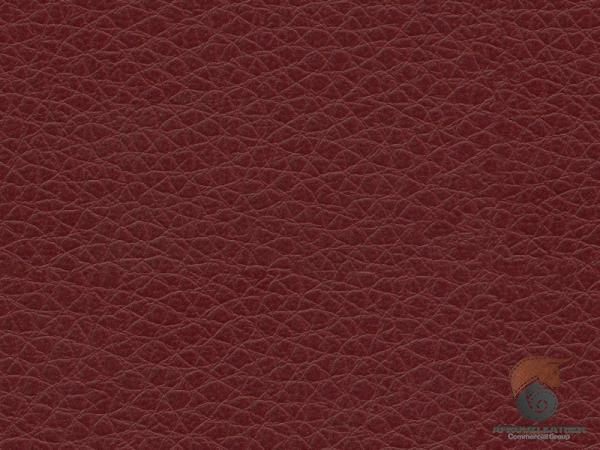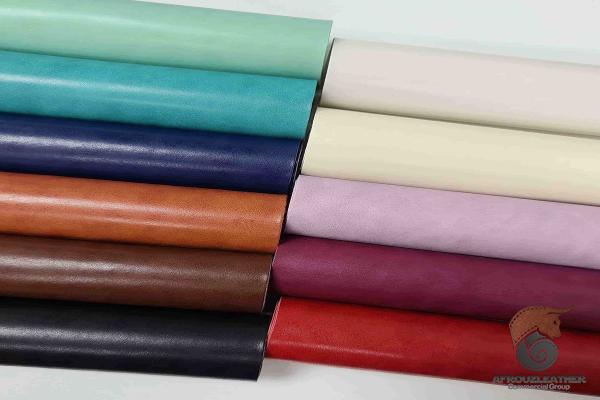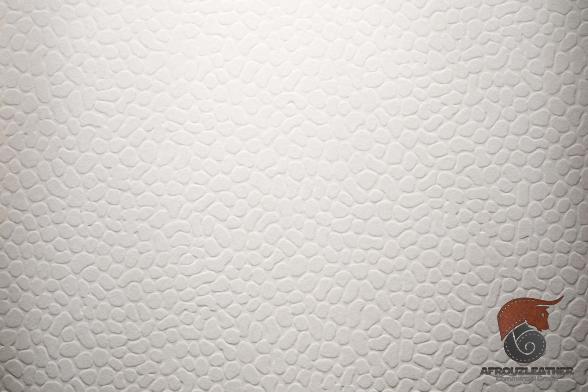Leather is a versatile and widely used material in several industries, including fashion, furniture, automotive, and accessories. It is derived from animal hides and skins, which undergo a complex process of tanning to transform the raw material into a durable and pliable material that can be used for various applications. The raw material for leather production is predominantly sourced from cattle, with other animals such as sheep, goats, and pigs also contributing to the global leather supply. The hides and skins are obtained as a byproduct of the meat industry, ensuring that the entire animal is utilized, reducing waste and maximizing resource efficiency. The first step in leather production involves the removal of the hair or wool from the hide or skin. This process, known as dehairing or depilation, can be done through mechanical means or by using chemical substances. The hides are then cleaned and soaked to remove any flesh, fat, and dirt remaining on the surface.
leather
 The next crucial step is the tanning process, which prevents the hide from decomposing and gives it the desired properties of strength, flexibility, and longevity. Tanning agents, traditionally derived from plant extracts, are used to impregnate the hide and create chemical bonds with the collagen fibers. There are different tanning methods used in leather production, including vegetable tanning, chrome tanning, and synthetic tanning. Vegetable tanning is considered the most ancient and environmentally friendly method, where tannins derived from tree bark or plant extracts are used to tan leather. It is a slow and artisanal process that results in a unique and natural finish. On the other hand, chrome tanning is the most common method used in the industry due to its speed and efficiency. It involves the use of chromium salts to tan the hides, resulting in a softer and more supple leather. Synthetic tanning methods are also gaining popularity as they offer greater control over the tanning process and enable the production of leather with specific characteristics.
The next crucial step is the tanning process, which prevents the hide from decomposing and gives it the desired properties of strength, flexibility, and longevity. Tanning agents, traditionally derived from plant extracts, are used to impregnate the hide and create chemical bonds with the collagen fibers. There are different tanning methods used in leather production, including vegetable tanning, chrome tanning, and synthetic tanning. Vegetable tanning is considered the most ancient and environmentally friendly method, where tannins derived from tree bark or plant extracts are used to tan leather. It is a slow and artisanal process that results in a unique and natural finish. On the other hand, chrome tanning is the most common method used in the industry due to its speed and efficiency. It involves the use of chromium salts to tan the hides, resulting in a softer and more supple leather. Synthetic tanning methods are also gaining popularity as they offer greater control over the tanning process and enable the production of leather with specific characteristics.
Specifications of leather
 Once tanning is complete, the leather is further processed to enhance its appearance and usability. This includes various finishing techniques such as dyeing, embossing, and buffing. Dyeing allows the leather to be colored in a wide range of shades and tones, while embossing creates patterns or imitates natural textures. Buffing, also known as polishing or sanding, helps to smoothen the surface and remove any imperfections. The quality of leather is determined by various factors, including the type of animal, the tanning method used, and the skill and expertise of the tanner. Full-grain leather, which retains the hide’s natural imperfections and characteristics, is considered the highest quality. Top-grain leather is slightly processed to remove some imperfections, while genuine leather refers to lower grades of leather that have undergone significant processing and often have a lower durability. Leather is widely used in the fashion industry for the production of shoes, bags, belts, and garments. Its durability, flexibility, and natural beauty make it a preferred choice for luxury and high-end products.
Once tanning is complete, the leather is further processed to enhance its appearance and usability. This includes various finishing techniques such as dyeing, embossing, and buffing. Dyeing allows the leather to be colored in a wide range of shades and tones, while embossing creates patterns or imitates natural textures. Buffing, also known as polishing or sanding, helps to smoothen the surface and remove any imperfections. The quality of leather is determined by various factors, including the type of animal, the tanning method used, and the skill and expertise of the tanner. Full-grain leather, which retains the hide’s natural imperfections and characteristics, is considered the highest quality. Top-grain leather is slightly processed to remove some imperfections, while genuine leather refers to lower grades of leather that have undergone significant processing and often have a lower durability. Leather is widely used in the fashion industry for the production of shoes, bags, belts, and garments. Its durability, flexibility, and natural beauty make it a preferred choice for luxury and high-end products.
buy leather
 Additionally, leather is popular in the furniture industry for upholstery and as a covering material for sofas, chairs, and other seating. The automotive industry also relies on leather for the production of car seats, steering wheels, and interior trim. Leather provides a premium and luxurious feel to the interior of vehicles, and its durability ensures that it can withstand daily wear and tear. In recent years, there has been a growing demand for synthetic leather alternatives in the automotive industry, driven by environmental concerns and advancements in technology. Leather is a natural material that requires proper care and maintenance to prolong its lifespan. Regular cleaning, conditioning, and protection from extreme temperatures and moisture are essential to prevent damage and preserve its appearance and integrity. In conclusion, leather is a valuable and versatile raw material that is widely used in various industries. Its unique properties, durability, and natural beauty make it a preferred choice for a range of products. From fashion to furniture and automotive applications, leather continues to be in high demand, offering a blend of luxury, functionality, and sustainability.
Additionally, leather is popular in the furniture industry for upholstery and as a covering material for sofas, chairs, and other seating. The automotive industry also relies on leather for the production of car seats, steering wheels, and interior trim. Leather provides a premium and luxurious feel to the interior of vehicles, and its durability ensures that it can withstand daily wear and tear. In recent years, there has been a growing demand for synthetic leather alternatives in the automotive industry, driven by environmental concerns and advancements in technology. Leather is a natural material that requires proper care and maintenance to prolong its lifespan. Regular cleaning, conditioning, and protection from extreme temperatures and moisture are essential to prevent damage and preserve its appearance and integrity. In conclusion, leather is a valuable and versatile raw material that is widely used in various industries. Its unique properties, durability, and natural beauty make it a preferred choice for a range of products. From fashion to furniture and automotive applications, leather continues to be in high demand, offering a blend of luxury, functionality, and sustainability.

Your comment submitted.